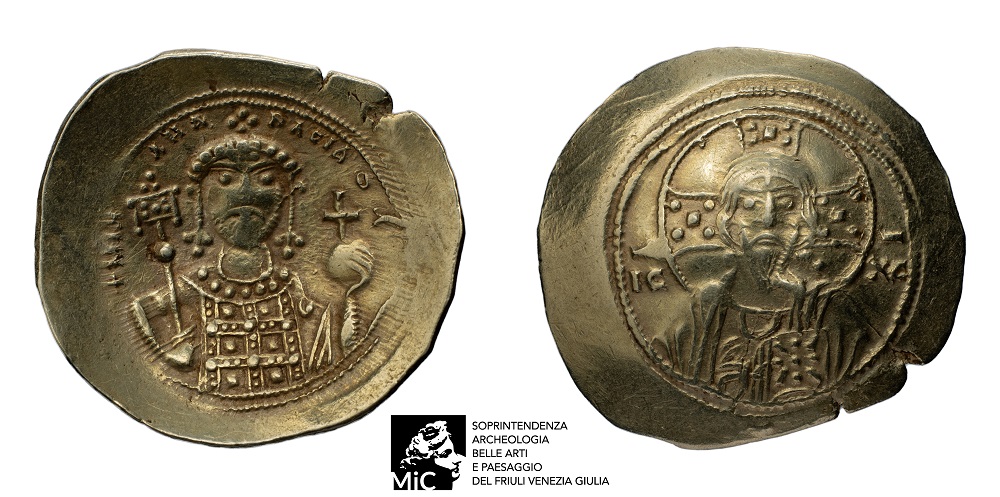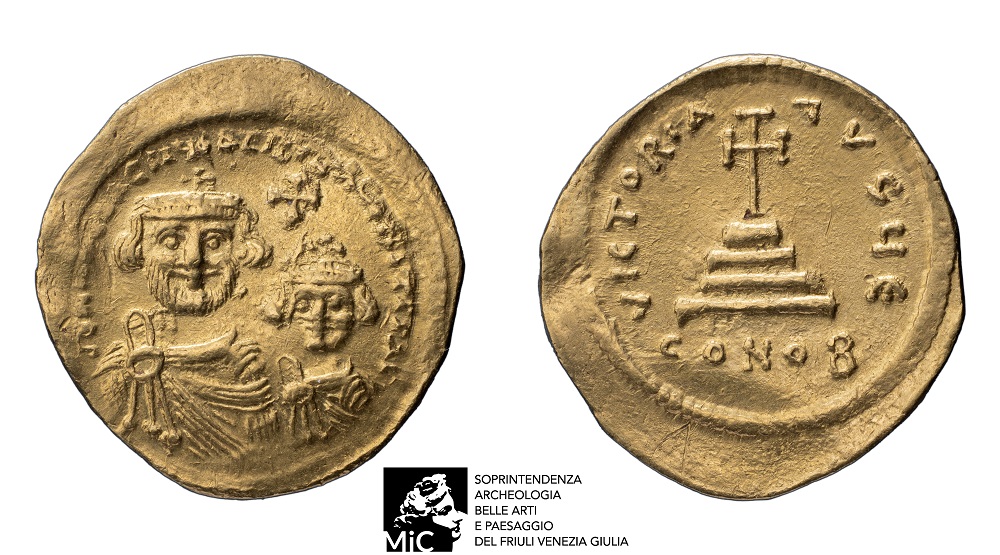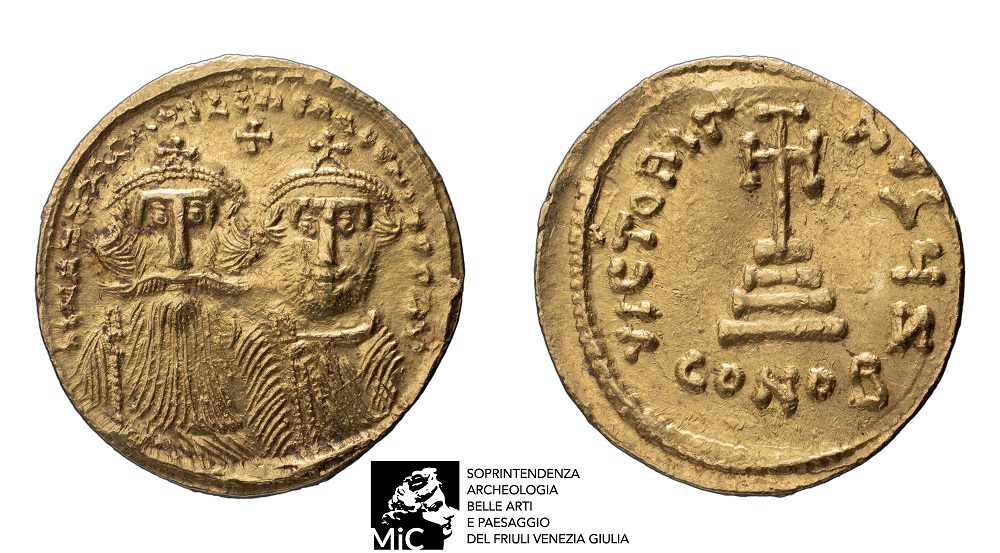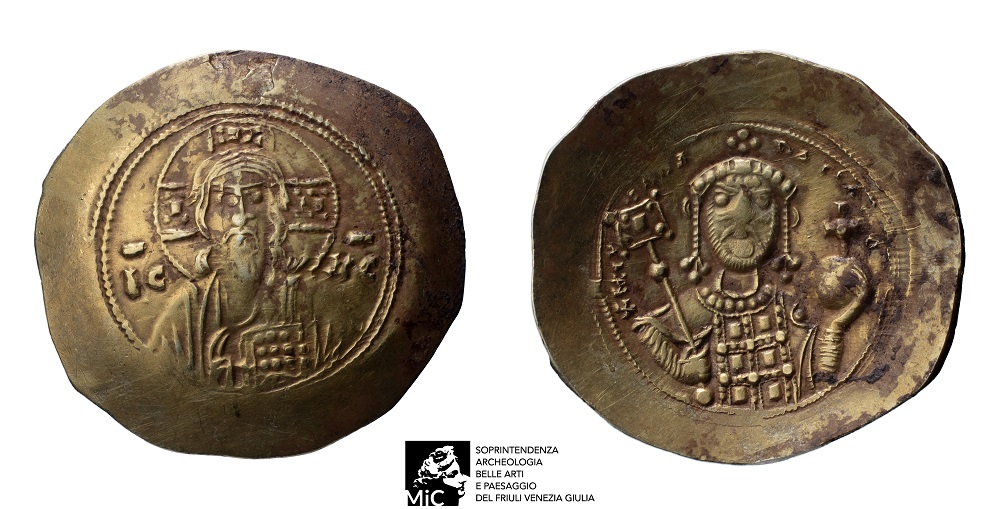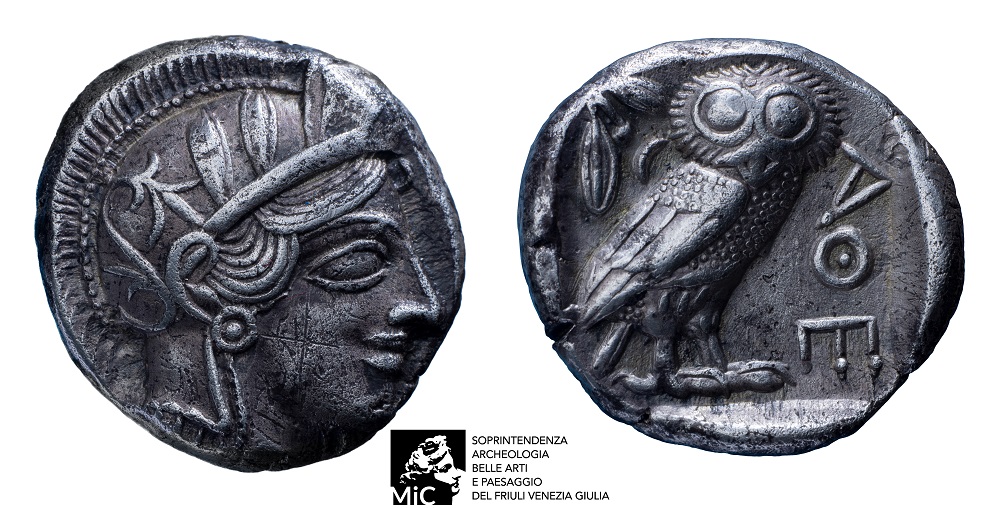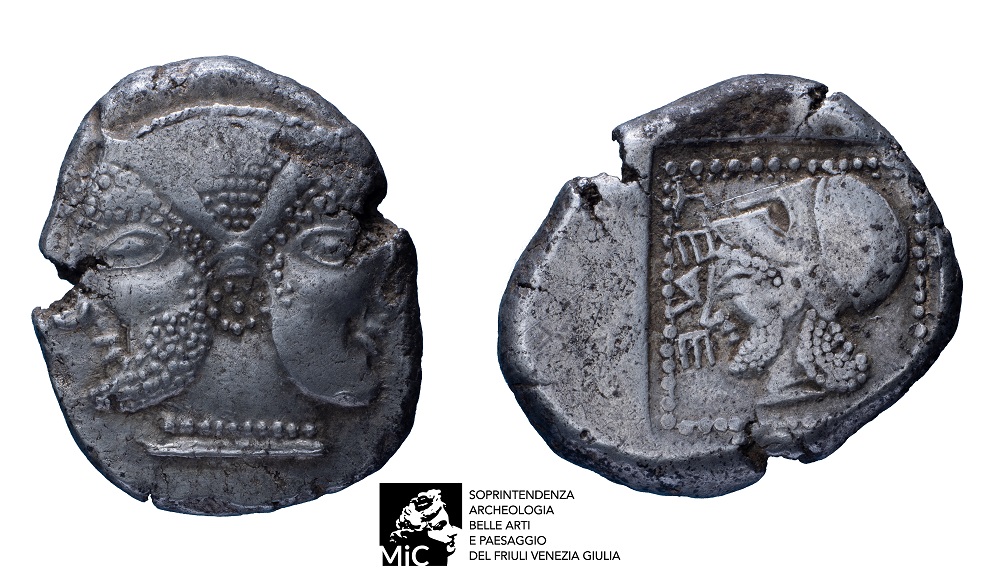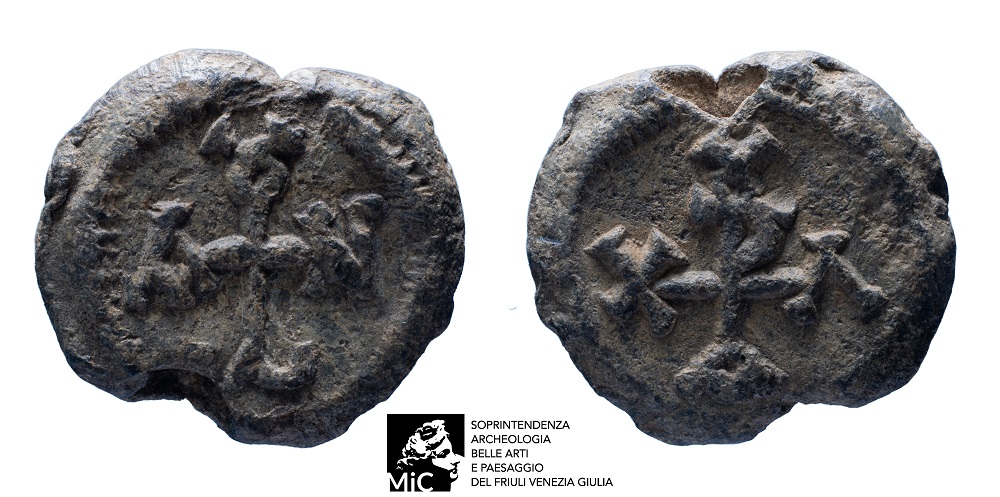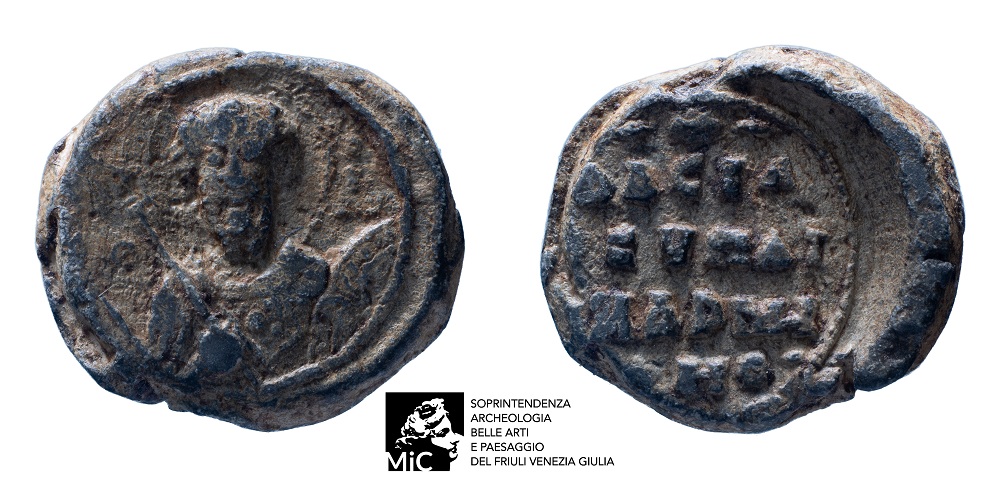Numismatic and Byzantine sigillography collection
1. Coin Cabinet.
In 2010, at the Department of Humanities, thanks to a convention between public and private bodies (Department of Humanities, Trieste Numismatic Association, Giulio Bernardi Numismatica srl), a Coin Cabinet was created endowed with a few thousand specimens, in part from Roman times but mainly medieval and late-medieval. A conspicuous number of auction catalogues and monographs were acquired in the same way, which were added to the numismatic-book holdings of the University Library.
In February 2013, another convention with the Archaeological Authority of Friuli Venezia Giulia, greatly facilitated by Luigi Fozzati and Paola Ventura, led to an exceptional increment of the numismatic collection. Around 3,500 ancient coins were received on deposit, with complete freedom of study and interdisciplinary research. Their provenance, from a confiscation of archaeological finds during customs controls in the border area between Italy and Slovenia, is indicated as the Balkans without further specifications.
There are:
- A possible Hoard of oboli from Abdera;
- Two Hoards of Alexander the Great period: ca. 100 tetradrachmes and some imitations;
- Two Haords of second half 3rd century: ca.1300 of roman denarii and antoniniani;
- Two Hoards of solidi: the 1st of the time of Onorius [Mint of Ravenna (Milan and Aquileia style, 402-406 = RIC, X, 1286], the 2nd of the period of Iustinus I [Mint of Constantinople];
- Hoard of denari, Latin Kingdom of Jerusalem: 225 coins.
There are also around ten Byzantine and Islamic seals, elements that reinforce the hypothesis of a Balkan provenance of the confiscated coins. This part of the collection has recently been substantially strengthened by a number of accessions thanks the byzantine seals.
The coins that are without provenance and without the possibility of being traced to a hoard include 6th century BC of electrum coins, Athenian coins and from other Greek mints, numerous denarii and republican and imperial Roman bronze coins issues of provincial Roman mints especially in the Balkans, medieval denari from mints active in the north-eastern area of the peninsula. The monetary documentation of the Austrian Empire is substantial.
In parallel a small medals unit was created, which assembles specimens from 19th century Trieste alongside works by contemporary artists (Angelo Grilli and Luciano Mercante being the most represented).
In fact, the whole history of ancient money and part of that medieval may be taught accompanying the lessons with the examination and direct analysis of the most famous coins that played a leading role in the world economy or illustrative of crises and reforms.
2. Publishing.
The study of money could not be separated from publishing on paper and in Open Access. This gave rise to some series of numismatic studies, two of which form part of the classical antiquity series of the Department of Humanities: “Polymnia. Numismatica antica e medievale. Studi & Documenti” (“Ancient and medieval numismatics. Studies and Documents”). Each publication was submitted for approval by the scientific committee (members: Giovanni Gorini, Cécile Morrisson, Andrea Saccocci, Robert Kool, Luigi Sperti and other colleagues from academic and university institutions) and to double anonymous peer-review by recognized specialists.
In the “Studi & Documenti” series the following have so far been published:
The other monographs include:
a. Ritrovamenti monetali di età romana nel Friuli Venezia Giulia, of which five volumes have already been published, collecting all data from Aquileia in particular. These are also published in open access at EUT: https://eut.units.it/it/catalogo/ritrovamenti-monetali-di-et-romana-nel-friuli-venezia-giulia-provincia-i-udine-volume-i213-aquileia-/5584
b. Luciano Mercante scultore e medaglista. La donazione della famiglia ai civici musei di Padova, Bruno Callegher, Elisabetta Gastaldi, Valeria Vettorato eds., EUT Edizioni Università di Trieste 2013.
Another meaningful project, in collaboration with Filippo Carlà-Uhink, and Paolo Evangelisti, aims to publish the annotated translation of medieval and late medieval sources on the formation of monetary and economic thought. To meet this need, the series 'Rei Nummariae Scriptores' was born. Entrusted to Marc Bompaire (École Pratique des hautes études (EPHE), Director of Revue Numismatique - Paris) – Daniel Carey (Director Moore Institute, National University of Ireland, Galway) – Giovanni Ceccarelli (University of Parma) – Orazio Condorelli (University of Catania) – Wim Decock (Universities of Leuven and Liège) – Johannes Eberhardt (Münzkabinett Staatliche Museen zu Berlin – Stiftung Preußischer Kulturbesitz. Bode-Museum) – Riccardo Finozzi (Banca d’Italia, Roma) – Giovanni Gorini (University of Padova) – Claudio Marsilio (Universidade de Lisboa) – Massimo Omiccioli (Banca d’Italia, Roma) – Pablo Ortego (Universidad de Málaga) – Giovanni Sabatini (Direttore Generale della Associazione Bancaria Italiana, Roma) – Andrea Saccocci (University di Udine) – Jean-Marie Salamito (Université Paris Sorbonne - Paris IV) – Pere Verdés Pijuan (IMF, Institución Milá y Fontanals - CSIC, Consejo Superior de Investigaciones Científicas-Spanish National Research Council, Barcelona) – Fritz Rüdiger Volz (Ruhr-Universität Bochum), It aims to re-propose a scientific and in-depth assessment of the history of money with a publishing operation that is useful not only for economists, historians and numismatists, but also for the broad range of those interested in these issues, proposing works of scientific value, but also accessible to a wider public thanks to articulate historical-economic introductions and clarifying or orienting comments. All publications, to date 4 volumes, are accessible online in full text/PDF form via Open Access.
3. Research and improvement of the numismatic holdings.
After the research on the Ritrovamenti monetali di età romana nelle province di Trieste e Gorizia (Coin finds from the Roman age in the provinces of Trieste and Gorizia), the studies were directed to the reconstruction of the Centur Hoard (Maresego-Slovenia), in part dispersed but in part retrievable thanks to the discovery of unpublished documentation. The attention on the Adriatic area extended to the reappearance of bronze Byzantine money in the 10th-11th centuries, starting from the study of the Canne Hoard.
The Assemani Symposia on Islamic coins remain a strategic initiative and, after the interruption due the Covid 19, will be resumed.
Themes of research linked to this topic can be:
1) Seventeenth- to nineteenth-century collections & collectors;
3) Polemics and disputes (e.g. “The Abate Giuseppe Vella Case”);
4) Coin finds in the archaeological excavations in Italy (North-East Italy, Ostia Arbor) and Syria-Israel;
5) Medieval Coinage in Northern-East Italy (Aquileia, Ravenna, Ferrara, Venezia);
6) Byzantine Sigillography in Adriatic area: from VIth to XIIth century;
7) Coins from the Negev (abandoned cities);
8) Archaeometric analysis of gold, silver and bronze coinage;
9) Medieval German coinage circulation between Central and Western Europe (XIIth-XVth centuries).
But the most far-reaching project today is the census of all finds of Byzantine coinage (hoards, single finds, necropolis and deposits) in the territories of the Byzantine Empire and those bordering it, between 498 and 1453, for which we refer to the portal, which will be presented, by invitation, in spring 2024 at Princeton University-USA: Nomismata database
Current team: Gianpiero Adami, Bruno Callegher, Giulio Carraro, Giorgio Donato, Andrea Gariboldi, Giovanna Marussi, Cristiano Rossetti, Kateryna Sorochan.
Perhaps this is not much, but it certainly seems to us something to be continued and made known in the smaTS portal.

